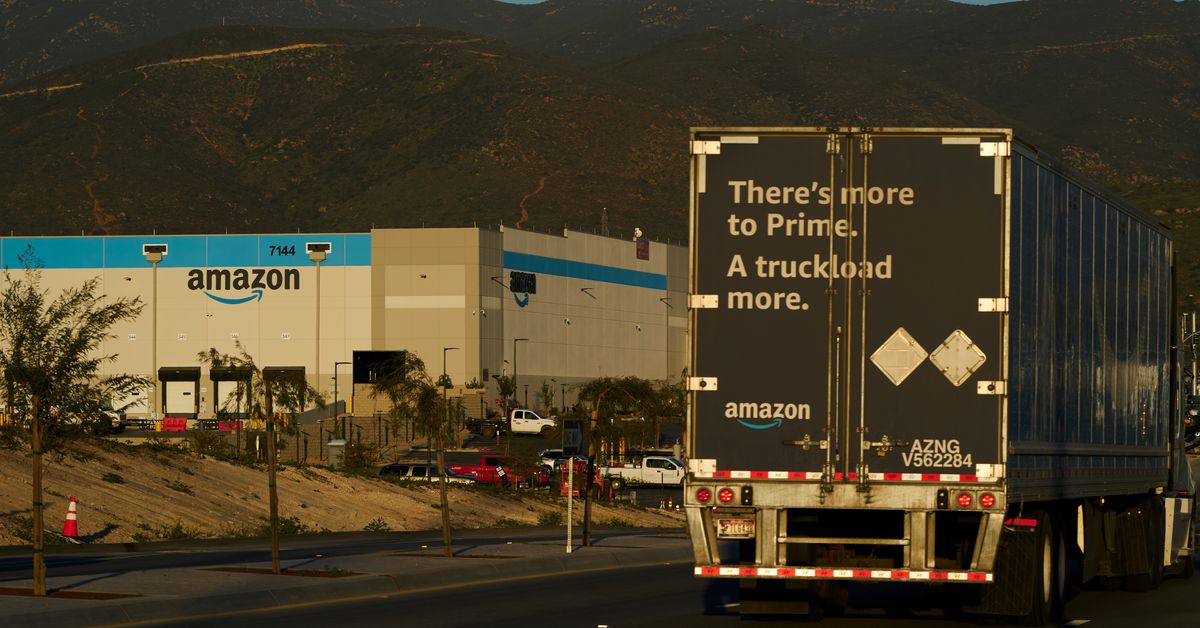Amazon’s climate pollution is getting way worse
Amazon’s greenhouse gas emissions ballooned big time last year despite the company’s efforts to sell itself as a leader in climate action. Its carbon dioxide emissions grew an eye-popping 18 percent in 2021 compared to 2020, according to its latest sustainability report.
Amazon generated 71.54 million metric tons of carbon dioxide equivalent last year, about as much pollution as 180 gas-fired power plants might pump out annually. This is the second year in a row that Amazon’s climate pollution has grown by double digits since it made a splashy climate pledge and started reporting its emissions publicly in 2019. Comparing that year to 2021, the company’s CO2 pollution has actually grown a whopping 40 percent.
Back in 2019, then-CEO Jeff Bezos announced that the company planned to reach net-zero carbon dioxide emissions for its operations by 2040. Unfortunately, that kind of pledge allows companies to get away with some misleading carbon accounting. They can aim to reach “net-zero” emissions or claim to be “carbon-neutral” by purchasing carbon offsets that are supposed to cancel out the impact of their emissions through supposedly eco-friendly projects. That usually involves planting trees, protecting forests, or promoting clean energy. Those offsets, however, typically don’t result in real-world reductions in the planet-heating CO2 building up in our atmosphere.
Amazon co-founded an initiative called the “Climate Pledge” in 2019 to recruit other businesses to make similar commitments to reduce CO2 and “neutralize” leftover emissions with “credible” offsets. But a meaningful impact on the climate only comes from a company getting rid of the vast majority of its pollution, if not eliminating all of its emissions.
Amazon isn’t setting a good example of that — despite the company’s best PR efforts. To take the heat off its growing absolute carbon emissions, Amazon points to a more flattering number in its sustainability report. “The focus should not be solely on a company’s carbon footprint in terms of absolute carbon emissions, but also on whether it’s lowering its carbon intensity,” the report says.
Amazon says it reduced its “carbon intensity” by a small figure — 1.9 percent — meaning the emissions they produce for every dollar of merchandise sold fell slightly. But this metric can also be misleading because those reductions in carbon intensity are easily wiped out when the company’s business grows.
That’s exactly what’s happened at Amazon. “As we work to decarbonize our company, Amazon is growing rapidly. We have scaled our business at an unprecedented pace to help meet the needs of our customers through the pandemic,” the company says in its sustainability report. In other words, Amazon made a killing during the COVID-19 pandemic as e-commerce surged — and Amazon’s pollution grew along with its profits.
This all goes to show why it’s important to look at a company’s entire carbon footprint to see if it’s actually reducing emissions overall. To make things worse, the figures Amazon reports are likely an undercount of how much pollution the e-commerce giant is truly responsible for because — unlike some other companies, including Target — Amazon doesn’t include the emissions that come from making many of the products it sells.
And while keeping track of carbon dioxide emissions is important for tackling the climate crisis that’s supercharging devastating heatwaves, droughts, wildfires, storms, and other disasters — it doesn’t capture the full spectrum of problems associated with Amazon’s mushrooming warehouses and all those smiley-faced diesel trucks making deliveries. For years, many communities where Amazon builds warehouses have called the company out for bringing more smog, soot, and noise to their neighborhoods. This latest report shows that Amazon still has a long way to go to prevent all of the pollution it creates.
For all the latest Technology News Click Here

